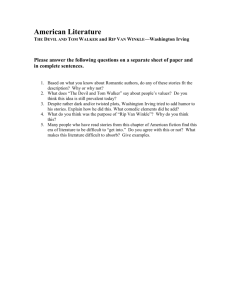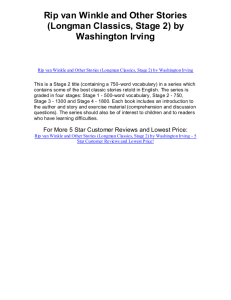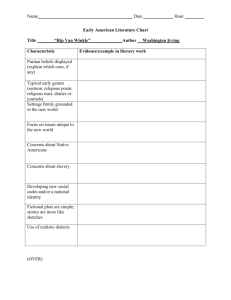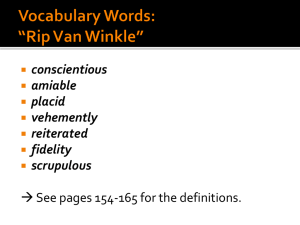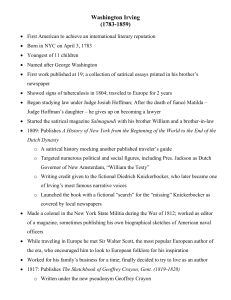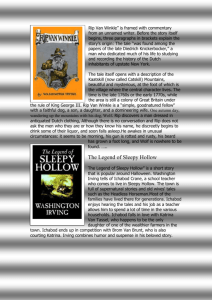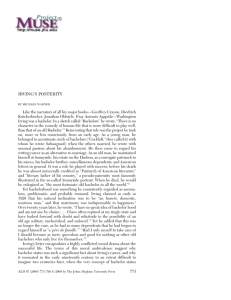“Rip Van Winkle”: The First Genuine Short Story found within
advertisement
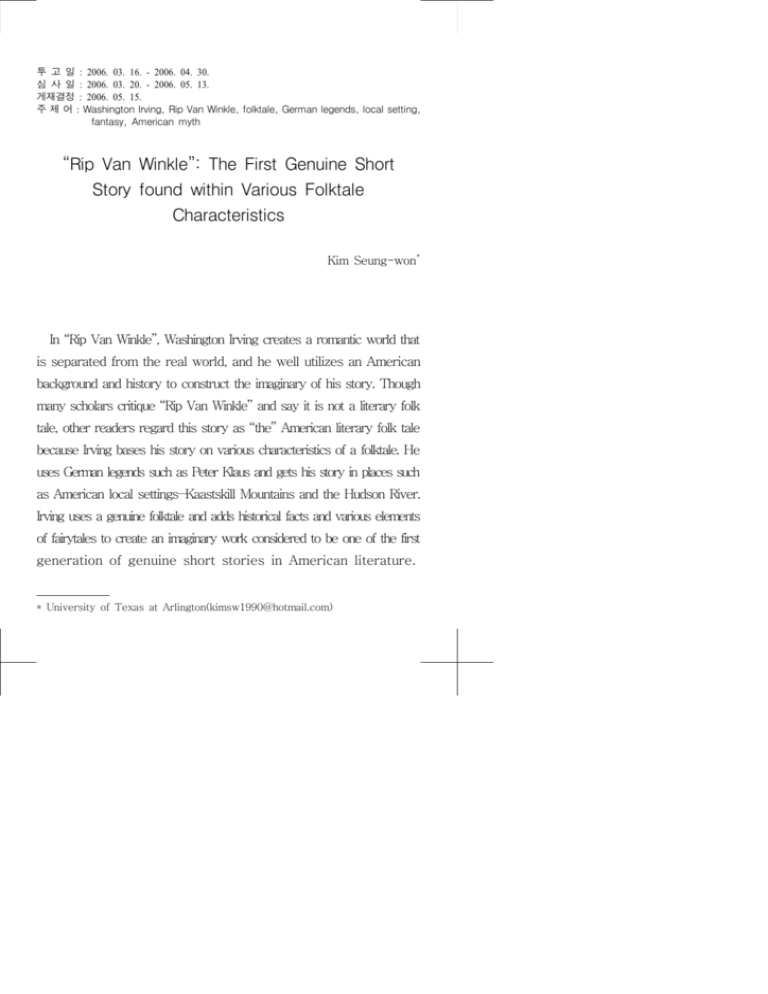
투 고 일 : 2006. 03. 16. - 2006. 04. 30. 심 사 일 : 2006. 03. 20. - 2006. 05. 13. 게재결정 : 2006. 05. 15. 주 제 어 : Washington Irving, Rip Van Winkle, folktale, German legends, local setting, fantasy, American myth “Rip Van Winkle”: The First Genuine Short Story found within Various Folktale Characteristics * Kim Seung-won 22) In “Rip Van Winkle”, Washington Irving creates a romantic world that is separated from the real world, and he well utilizes an American background and history to construct the imaginary of his story. Though many scholars critique “Rip Van Winkle” and say it is not a literary folk tale, other readers regard this story as “the” American literary folk tale because Irving bases his story on various characteristics of a folktale. He uses German legends such as Peter Klaus and gets his story in places such as American local settings―Kaastskill Mountains and the Hudson River. Irving uses a genuine folktale and adds historical facts and various elements of fairytales to create an imaginary work considered to be one of the first generation of genuine short stories in American literature. * University of Texas at Arlington(kimsw1990@hotmail.com) 348 동화와번역 제11집(2006. 6) Born and raised in New York, Washington Irving (1783-1859) initially went to Europe for health reasons in 1804, returning after two years. He crossed the Atlantic again in 1815, and for seventeen years he lived abroad. During this time, he researched various European cultures and literary sources. While staying in Europe, he became interested in European history and legends. This interest is shown in several of his works, such as The Sketch Book (1819-1820), Bracebridge Hall (1822), Tales of a Traveler (1824), Life and Voyages of Christopher Columbus (1828), Conquest of Granada (1829), Voyages of the Companions of Columbus (1831), and The Alhambra (1832). These various works are all related to European sources. Irving developed a special interest in German folktales, and he uses many motifs from the German folktales to create his unique stories. Irving borrowed the story and motif of “Rip Van Winkle” from a German legend―Peter Klaus the Goatherd. In Guide to American Literature, James T. Callow and Robert J. Reilly explain Irving’s connection with German folklore. They state: […] Irving began learning the German language. He read the tale of Peter Klaus, a goatherd who enters a cave, acts as pinsetter for twelve knightly bowlers, drinks some wine from an inexhaustible tankard, awakens twenty years later minus his goats and dog but with a footlonger ‐ beard, and looks for family and friends in a village he hardly recognizes. (78) Through the comparison of these two stories, readers realize that the characters, setting, motif, and plot of “Rip Van Winkle” resemble those found in Peter Klaus. In “Rip Van Winkle”, Irving uses the settings of mythic mountains and places where Rip Van Winkle met mysterious people. Then,
